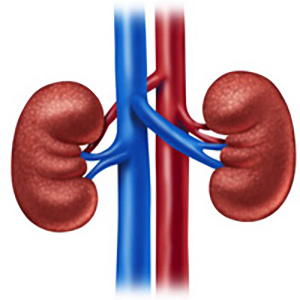Enhanced recovery after retrograde intra-renal surgery (RIRS) in comparison with mini-percutaneous nephrolithotomy (Mini-PCNL) for renal stone treatment

Accepted: February 17, 2023
All claims expressed in this article are solely those of the authors and do not necessarily represent those of their affiliated organizations, or those of the publisher, the editors and the reviewers. Any product that may be evaluated in this article or claim that may be made by its manufacturer is not guaranteed or endorsed by the publisher.
Authors
Objectives. The study presents a comparative analysis of the mini-percutaneous nephrolithotripsy (mini-PCNL) and retrograde nephrolithotripsy (RIRS) with a logistic analysis of outcomes and complications. Material and methods. The prospective study included 50 patients diagnosed with urolithiasis from 2018 to 2021 in the urological hospitals in Irkutsk. Patients were divided into two groups: RIRS (group I, n = 23) and Mini-PCNL (group II, n = 27). The comparison groups are statistically homogeneous. Results. Both procedures equally lead to high stone free rates (SFR > 1 mm, 91.3% vs 85.1%; p = 0.867; SFR > 2 mm, 95.6% vs 92.5%; p = 0.936). The intergroup analysis of the total operation time (and lithotripsy) demonstrated similar times (p > 0.05). Postoperative complications of classes II-III (Clavien-Dindo) in the early and late postoperative period developed rarely and were comparable (p > 0.05). Class I complications were predominant in the PCNL group (p = 0.007). Some parameters demonstrated the superiority of RIRS over PCNL: less pronounced pain syndrome (p = 0.002), less drainage time (p < 0.001), no postoperative hematuria (p = 0.002), shorter hospitalization and total treatment period (p < 0.001). Conclusions. The study highlighted the positive effect of the oneday surgery principle on the risk of developing postoperative hematuria, urinary infection, or severe postoperative pain. RIRS and mini-PCNL have similar effectiveness, but RIRS meets the criteria of the enhanced recovery program more than PCNL.
How to Cite

This work is licensed under a Creative Commons Attribution-NonCommercial 4.0 International License.
PAGEPress has chosen to apply the Creative Commons Attribution NonCommercial 4.0 International License (CC BY-NC 4.0) to all manuscripts to be published.

 https://doi.org/10.4081/aiua.2023.10991
https://doi.org/10.4081/aiua.2023.10991



